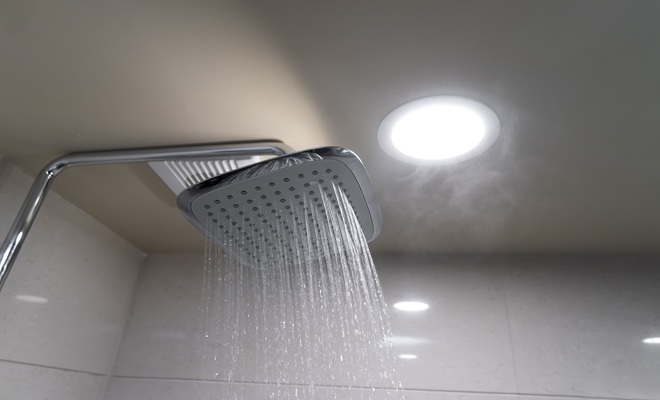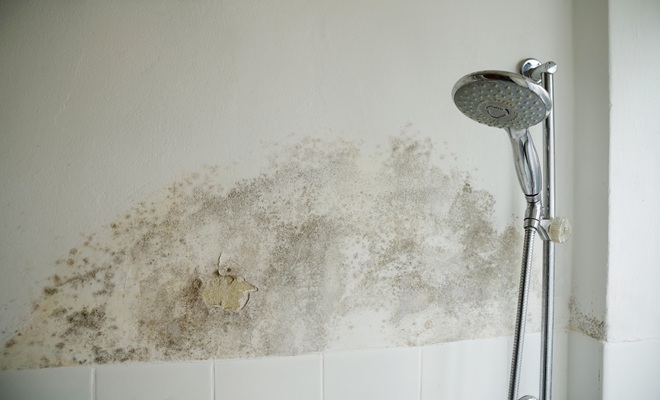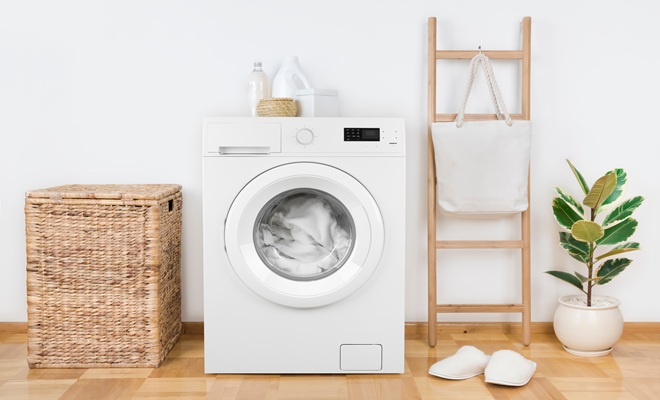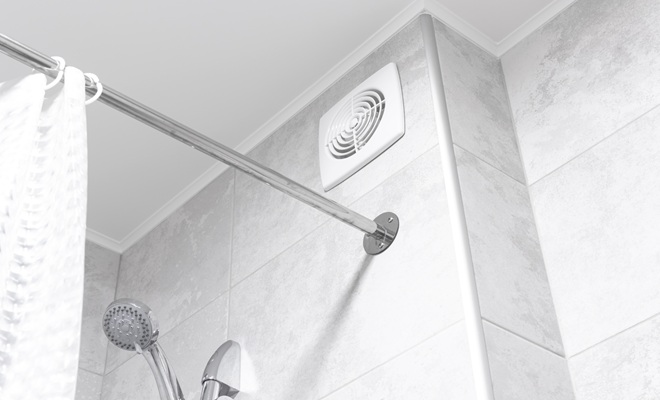How to Prevent Mould on a Shower Curtain
Last updated 18th June, 2025
After you shower or take a bath, a level of moisture will remain in the air that can cause mould and mildew to grow on your shower curtain. Once mould has grown, it is tough to remove, so prevention is key.
This article by cleaning expert Matthew Harrison at PriceYourJob.co.uk will explore why it is important to prevent the formation of mould on your shower curtain and how to tackle the issue.

Why Might Mould Grow on My Shower Curtain?
Mould grows on shower curtains because they get wet frequently. It tends to grow in warm, damp areas and requires moisture to thrive, so your bathroom becomes the ideal breeding ground when it becomes hot and steamy.

The majority of what will grow on a shower curtain is mildew. This is a type of mould that does not attach itself as strongly to surfaces, so it is easier to remove. However, it will need to be addressed nonetheless in order to avoid negative effects on your health.
Why is it Important to Prevent Mould?
Mould can cause significant health problems if left unaddressed, so it is essential to prevent it and treat it immediately if it does form. The mould spores release toxins into the air, which can then be breathed in. Prolonged exposure can cause coughing, congestion, and headaches, amongst other things.

It is particularly important for those who have asthma, lung problems or compromised immunity to avoid being in proximity of mould as these conditions will put you more at risk of suffering a negative and more severe reaction.
How Can I Prevent Mould from Growing on My Shower Curtain?
Fortunately, there are a number of measures that you take to prevent mould from growing on your shower curtain. Here are some top tips:
Regular Washing
Washing your shower curtain on a regular basis can help to prevent mould from growing.
 Each component should be washed individually, and here is how:
Each component should be washed individually, and here is how:
- Fabric curtain: Wash the curtain in your washing machine (if it is washing machine friendly, which is the recommended option to purchase) according to the instructions on the care label, adding 1 cup of vinegar during the rinse cycles. Allow the curtain to air dry naturally in a well-ventilated area.
- Plastic Liner: Place the plastic liner into the washing machine alongside bath towels. Wash them on a delicate, cold-water cycle, adding a cup of baking soda and a cup of vinegar during the rinse cycle. Once again, allow this to air dry – this is particularly important with plastic, as artificial heat can cause it to melt.
- Rod and Rings: Spray the rod and rings with a bathroom or all-purpose cleaner and wipe them down with a cloth to remove any residue.
Clean the Plastic Liner Weekly
Spraying down the plastic liner of your shower curtain weekly can help to prevent mould and mildew from forming in between washes. Simply spray it with either a store-bought bathroom cleaner or a solution of equal parts warm water and distilled white vinegar.
Keep the Liner Inside and the Curtain Outside
The plastic liner of your shower curtain should always be kept inside of your bathtub, whilst the fabric (if your curtain has any) should be kept outside. This will prevent moisture from getting trapped between the two and also allow them to dry more quickly – both being crucial factors for mould prevention.

Dry Your Shower Curtain After Each Use
Mould forms when moisture is left to sit on a surface for a long period of time, so you should be drying your curtain after each time you shower. This will help to prevent mould and mildew, as well as soap scum, from building up. Use a dry towel to remove the water from the wet side of the curtain after you shower. Shake out the liner and any folds in the curtain to release trapped moisture.
Control Humidity in Your Bathroom
Mould is generated by humidity, so this should be kept to a minimum. To prevent your bathroom from becoming humid while you shower, make sure that the area is well-ventilated by leaving the door open a crack and opening a window. Extractor fans and dehumidifiers are excellent appliances to consider purchasing to further combat this issue.

Hang Up Wet Items After Showering
If you leave wet towels, washcloths, or bathmats bunched up on the floor, they will not dry quickly and effectively, which can potentially lead to the growth of mould, especially if left for a long time. As soon as you have finished with these items, hang them up to dry on a towel rack or heated airer to allow them to dry completely.
Deep Clean Your Bathroom on a Regular Basis
Your bathroom should be cleaned on a regular basis so as to prevent mould from growing on a shower curtain; the entire area should be kept free of it. Spray down counters, sinks, and the interior of your shower at least once a week to get rid of soap scum and prevent mildew from forming. Ensure that any towels, bathmats and other fabrics are washed regularly and dried thoroughly before re-entering your bathroom.

What Should I Do if There is Already Mould on My Shower Curtain?
Mould is almost impossible to remove fully once it has set in completely and may come back or even spread. If there is a great deal of mould on your shower curtain, it should be disposed of and replaced with a new one. You can try cleaning minor mildew yourself.

Soak the curtain for at least 8 hours in a bleach solution to remove the mildew (this is only possible for plastic curtains and liners as bleach will discolour any fabrics). Ensure that the room is well-ventilated to avoid too much exposure to the bleach fumes.
Where Else Can Mould Grow in My Home?
Kitchen
Elements such as leftovers, wet surfaces, unwashed dishes, and waste can all contribute to the growth of mould. The moisture and leftover food on plates and pans will increase the growth of mould colonies, so it is important to keep on top of cleaning and keep your kitchen as moisture-free as possible.

Living Room
Mould should be easy to spot in the more frequently used areas of our living rooms, but it can also grow behind wallpaper or furniture or even in the fireplace. It is also important to check for mould hiding in carpets and rugs and in corners of ceilings.
Bedroom
Bedroom windows and windowsills can, unfortunately, become a breeding ground for mould, so they must be cleaned regularly. Mattresses should also be checked frequently to make sure that no moisture has become trapped within the fabric.

Garage and Loft
As these areas are usually less frequently used than other areas of the home, they are given far less ventilation. These rooms also often have a lot of dark corners where mould can easily grow unnoticed, so it is important to keep it in check and call in a professional if you suspect there is a problem.









